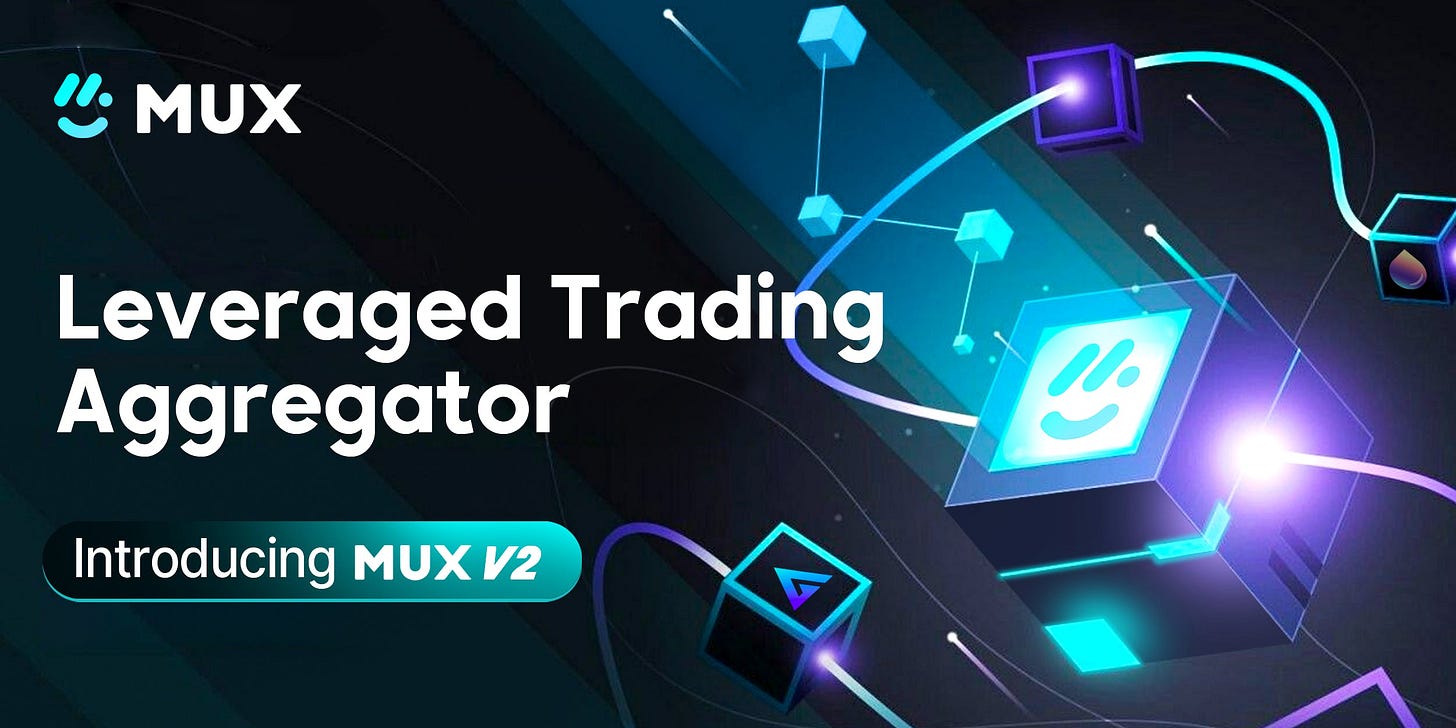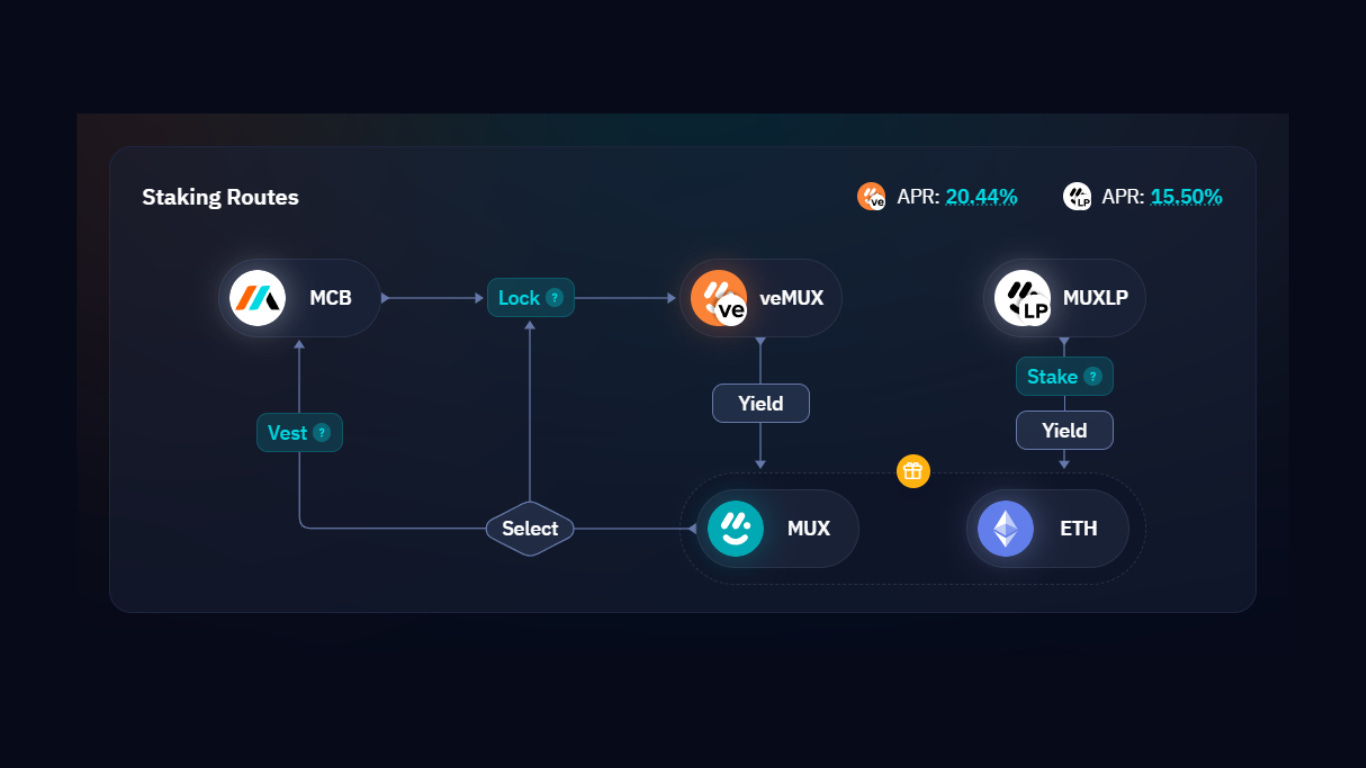MUX Protocol - Perps DEX and Aggregator
Optimal pricing for perps traders and real-yield for token holders
Perps trading has seen massive growth in DeFi, with industry leaders such as GMX being some of the best-performing protocols during the bear market. Demand has led to more and more perps DEXs launching, all with unique pricing mechanisms, different liquidity depths, and tradeable assets.
But this has fragmented liquidity between different protocols and chains. And with different pricing mechanisms, it is now almost impossible for traders to work out which protocol offers the optimal price for a particular asset at a particular size at any given moment.
What is needed is a protocol that can automatically compare pricing and liquidity depth across the leading perps DEXs and even across chains, then automatically route the trade through the best option or options if one protocol can't optimally service the trade.
What is MUX Protocol?
MUX is a perps DEX and aggregator that gives traders optimal pricing and liquidity by routing trades to the DEX that offers the best pricing and liquidity. The ultimate goal is to tap into liquidity and pricing from a wide selection of DEXs across multiple chains.
MUX Protocol already aggregates between their own MUX DEX, GMX, and Gains on Arbitrum and utilizes their own liquidity across all the chains on which MUX has been deployed. It also enables higher leverage and more capital-efficient margins when it routes to GMX, allowing degens to win more and lose more with enhanced capital efficiency. And this functionality has helped MUX capture a bigger and bigger market share of trade volume.
Even better, the main two tokens, MCB and MUX, when locked to create veMUX, get a share of the revenue generated from trading fees, liquidations and leverage boosting fees on underlying protocols.
How does MUX work?
To achieve universal liquidity across chains MUX is deployed on, zero price impact, compare prices and liquidity between protocols and route trades optimally, MUX uses the multiplexing layer, which is why the protocol is called MUX. And to avoid slow performance and a bad user experience while these processes take place, the multiplexing layer is completely off-chain
Aggregation between MUX, Gains, and GMX is entirely free, giving perps traders a great incentive to use MUX instead of the underlying protocols, as they should always get the best price. However, leverage boosting for GMX isn't free, providing another significant revenue stream for MUX and its token holders.
And with MUX's ever-deepening liquidity and competitive trading fees, a large percentage of volume is routed through the underlying MUX DEX anyway, leading to consistent revenue even in low-volume periods.
Roadmap
With aggregation between two top perp DEXs and their own DEX, MUX already has one of the best unique selling points in DeFi. However, they are currently only on version 2 of the MUX protocol, and versions 3 and 4 will exponentially improve the trading experience on the platform, especially as they increase the number of underlying platforms they aggregate between.
GMX and Gains like MUX are all Arbitrum native protocols, so aggregation between these has been a relatively easy step, but version 3 will bring cross-chain aggregation. And with new and exciting major chains launching like Base and zkSync, an aggregator that can compare liquidity and pricing across multiple chains has never been more needed.
Currently, if one underlying protocol can't optimally meet a trader's needs, MUX can split the trade between two or more protocols, but this shows on the platform as two or more different positions. And these separate positions, with different margins, must be managed by the trader, creating a poor user experience and capital inefficiency.
The ultimate goal with version 4 is to unify these separate underlying positions in one container and show them through the MUX protocol as just one trade, with one margin to maintain.
So if MUX can complete everything currently on their roadmap and link up to more and more underlying protocols, they will be able to offer the best pricing and liquidity across multiple chains, with superior capital efficiency, while providing a seamless user experience.
How can you benefit from MUX?
For perps traders, you get an easy-to-use platform that currently gives you the best pricing and liquidity between three of the top perps platforms in DeFi. So MUX is already one of the most efficient trading platforms to use. And as steps on the roadmap get completed, this will expand to include the best pricing and liquidity across many more protocols and chains while giving you a seamless user experience.
But if, like Charlie Munger, you believe the fastest way to go broke is ladies, liquor, and leverage, then there are other ways to profit from the MUX ecosystem.
The top perps DEXs need enormous amounts of liquidity to cover the millions in volume going through their platforms daily, and MUX is no different. And this provides a massive opportunity for yield farmers to farm high APR on a relatively stable asset.
Liquidity is provided by the MUXLP, which is both a pool and a mintable token. Add one of the assets needed for the pool, and the protocol will mint you MUXLP tokens. You can then stake those tokens for a share of protocol revenue, currently over 10% APR in ETH, and MUX tokens with an APR of over 5%.
Alternatively, you can buy MCB, the core tradeable token of the MUX protocol, and lock MCB to create veMUX, which, when staked, earns protocol revenue at around 8% APR and MUX at 12% APR. But here's the catch, locking has different options varying from two-week to four-year locks. With a two-week lock, you get a pitiful 0.009589 veMUX per MCB, while a four-year lock gives you a full veMUX token per MCB.
Of course, locking MCB for months, even years, requires some incredible long-term conviction. But it seems many have that conviction, with around a quarter of the total MCB supply locked until 2026 and beyond.
Alternatively, you can take advantage of reduced circulating supply from others locking MCB and aim to unlock and sell in the short to medium term, however you will get significantly less yield.
But what do you do with the MUX rewards you get? MUX tokens can also be locked to create veMUX and earn the same yield as locked MCB. Or they can be vested linearly over a year into MCB and sold, they aren’t tradeable without vesting.
Again as with MCB, what you do with your MUX tokens will depend on your long-term conviction; four years is an incredibly long time in DeFi. However, one year could place us in the middle of a bull market.
The future is bright, the future is aggregated
Real-yield DEXs are the most obvious winners in the next bull run; more volume equals more trading fees, and in the case of perps DEXs losing trades and liquidations. So nearly all the currently successful perps DEX tokens that share revenue will see significant upside should a bull run start soon.
But some offer much more upside than others, and MUX is undoubtedly one of those. With aggregation between GMX, Gains, and their own DEX, plus margin boosting, MUX is already among the most useful trading platforms. And with more underlying platforms, cross-chain aggregation, and unified positions, it arguably could become the most useful and used perp platform. So MUX could become one of the highest volume platforms in the next bull run and one of the biggest revenue generators.
However, despite trading volumes not far behind GMX and APR significantly higher, MUX's tradeable token MCB sits at a market cap less than one-tenth that of GMX.
Considering MUX's unique and handy trading functionality, the clever tokenomics rewarding long-term participants and locking up supply, and the game-changing roadmap, MCB is massively undervalued. And when MUX has completed more of its roadmap and DeFi volumes start increasing, there will be incredible demand for both their services and tokens.
If you enjoyed this article, please subscribe, follow The Metaverse Guy Twitter account, and join my Telegram channel, The Metaverse Guide.
Read another of my articles 👇
Vertex Protocol - Better Than CEX
Since the collapse of FTX and the loss of billions in customer funds, not to mention the recent SEC action against Binance and Coinbase, the case for on-chain transparency and self-custody you get from decentralized exchanges has never been more apparent.
*Disclaimer: this is not financial advice; always do your own research. I currently only hold a small amount of MCB, but plan to accumulate*









